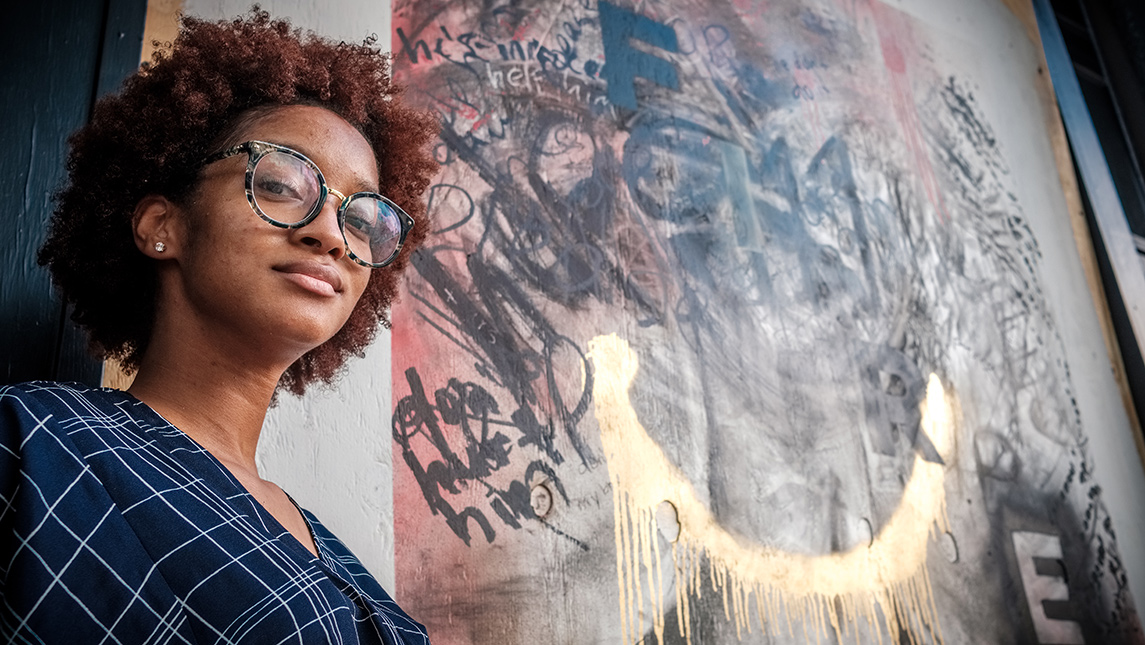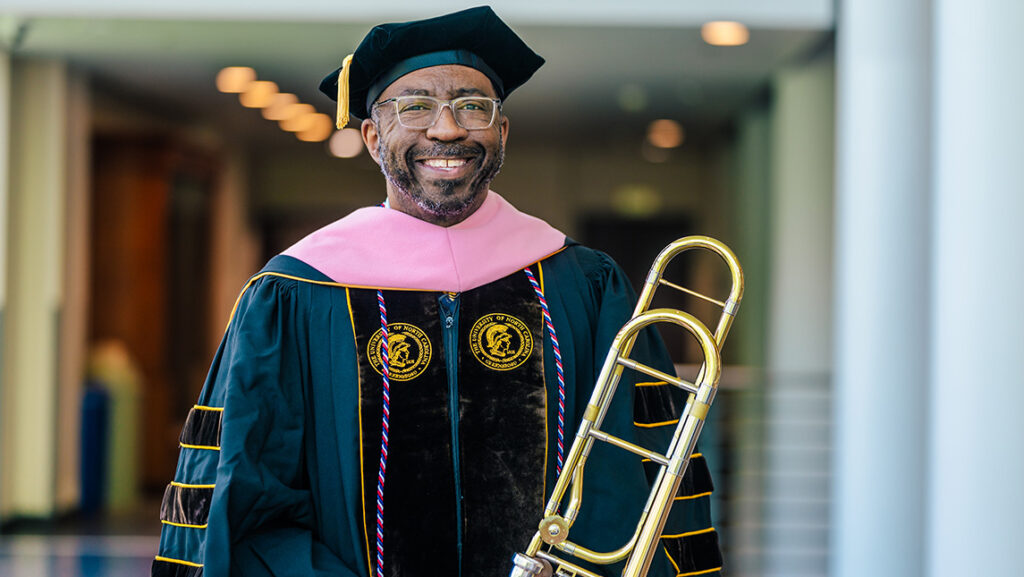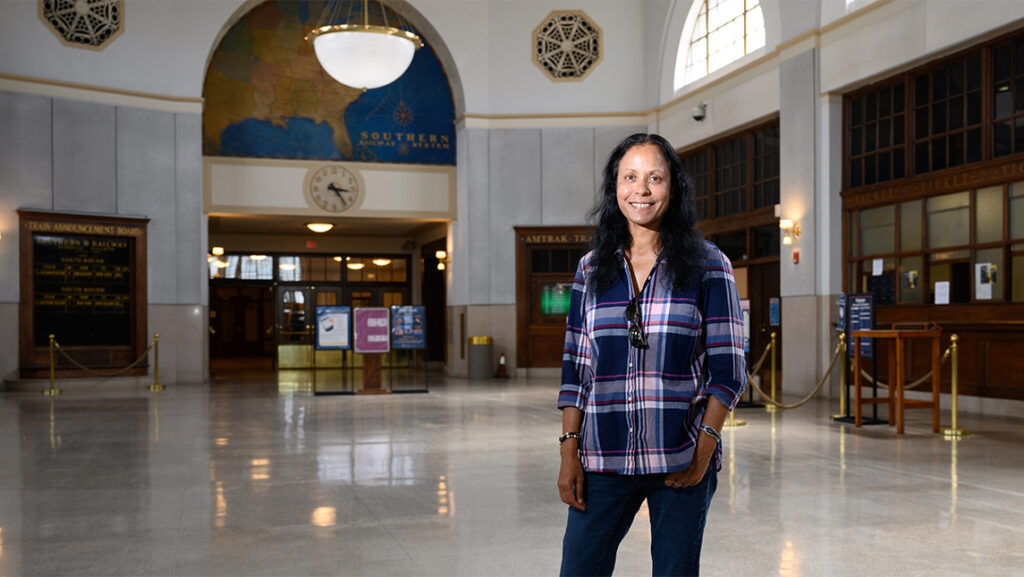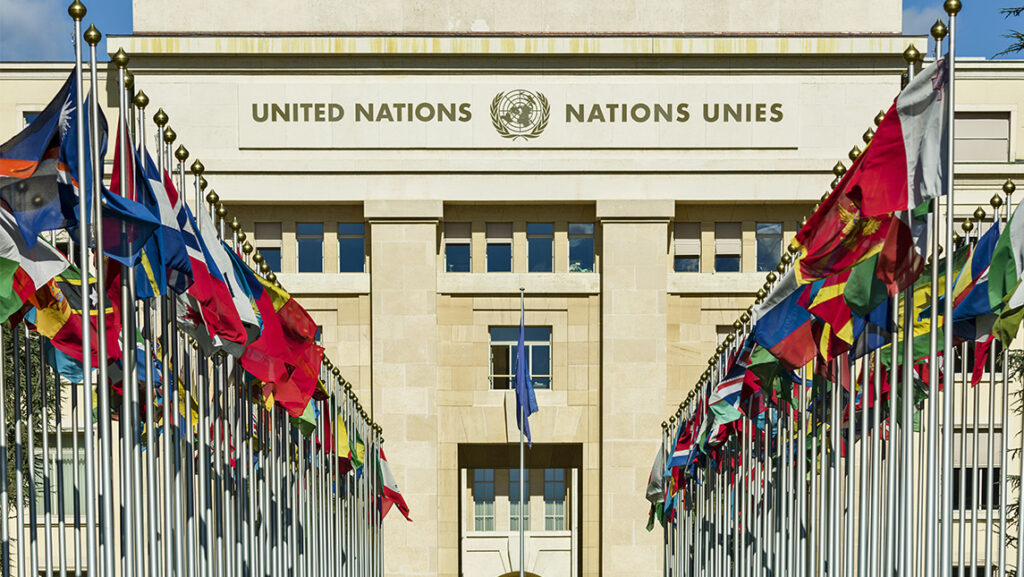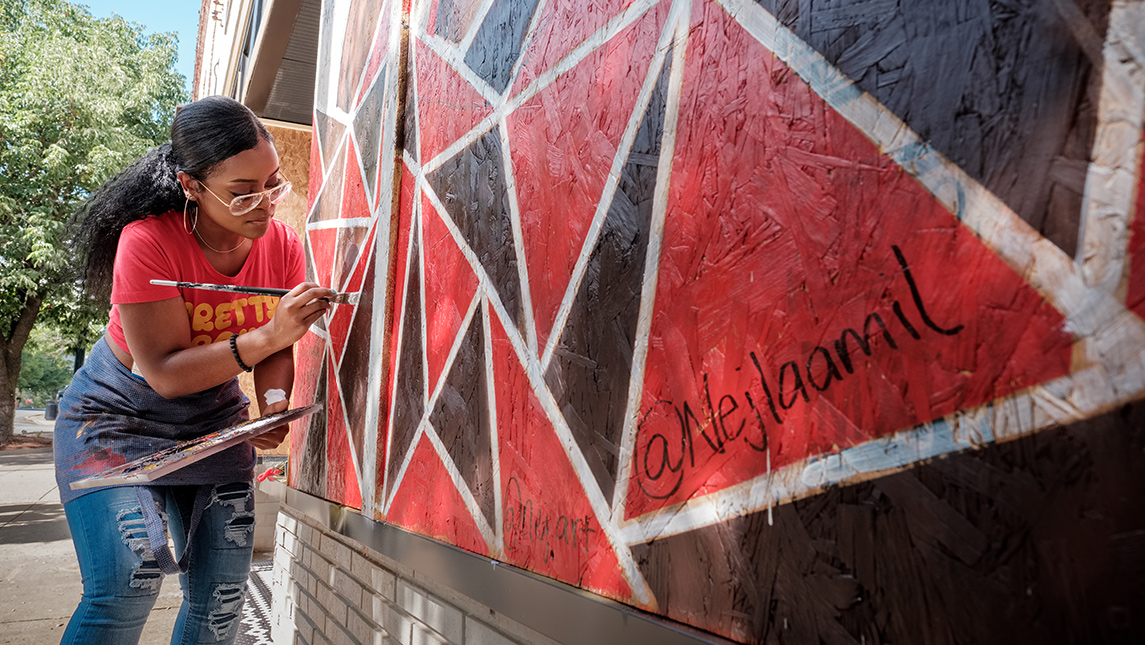
Downtown Greensboro looks a lot different this month. Vibrantly painted storefronts, challenging quotes from authors and musicians, and art that refers to love, justice, peace, grief, support, and hope.
Several Spartan students, alumni, and faculty are among the many on Elm Street proving the power of art.
On May 25, an unarmed George Floyd was killed in Minneapolis police custody. The video was horrifying.
“I can’t breathe,” Floyd repeated before dying. It was the latest in a series of deaths captured on video of unarmed black men and women – like Eric Garner in 2014, who similarly gasped “I can’t breathe” while in a police chokehold.
Protesters assembled in cities across the nation to express their anger and grief and advocate for change. The first nights of protests in downtown Greensboro and unrest left many Elm Street storefront windows broken. Several businesses were looted.
As plywood went up over the Elm Street glass windows, so did art. And images of black men and black women. And on many panels, the names of those who are mourned.
“Say their names,” several art pieces read.
UNCG students and art faculty members were among community artists volunteering to create the art.
Phillip Marsh was one of the organizers. He points out the art was blooming spontaneously before he had a role. Artist Gina Franco and shop owner Jennifer Graf were early organizers, he says. ArtsGreensboro provided some funding and support. But much of the effort was what he describes as “organic,” with many businesses and artists working independently, yet all somehow in a similar way.
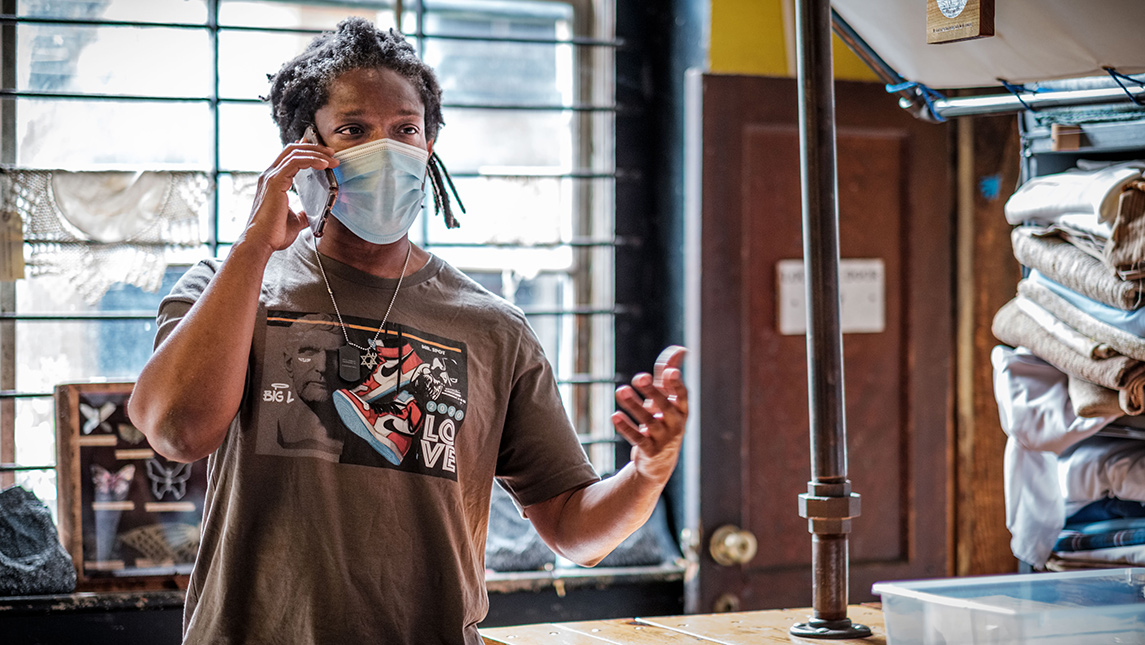
Marsh is well-known in the region. An artist, organizer, and businessperson, he has helped organize the series of murals of local civil rights trailblazers near Studio 503. The water tank on Battleground Avenue. The Bellemeade deck mural. Last year he gave a TedXGreensboro talk on street art in Greensboro. With an associate’s degree from GTCC, Marsh is now earning his BFA at UNCG. He explains that it will provide him both credentials and experience he can draw on as he continues his career.
Much of the art on the storefronts conveys political – though not partisan – messages.
“Love, not hate.”
“Say their names.”
“Black lives matter.”
One of the muralists, Ryan Oakley, a Wake Forest University alumnus who took UNCG science courses during summers, says, “When has art never been political?” She alludes to North Carolina native Nina Simone: “Artists are the conscience of the times.”
In response to the question “Is this art or are these political messages?” Marsh says, “It’s both. It’s always both.”
Instead of museum patrons exploring art, with its political dimensions, in an art museum, Marsh explains, this art is accessible to everyone.
White-power wording and graffiti were spray painted over two prominent art sites near dawn last weekend. The artists responded to this damage by turning the plywood around, creating new work, Marsh explains. But the graffiti-marred work on the back will always be a part of the artwork’s story.
At Scuppernong Books, the art bears names – and a large quote. Rachele Riley, assistant professor of new media and design at UNCG’s School of Art, asked Scuppernong Books owners if they were interested in a mural project. Their glass front was covered in plywood sheets. “After a meeting where we discussed possibilities and their desires, they selected the James Baldwin quote.”
Baldwin was Scuppernong’s featured writer in a recent year.
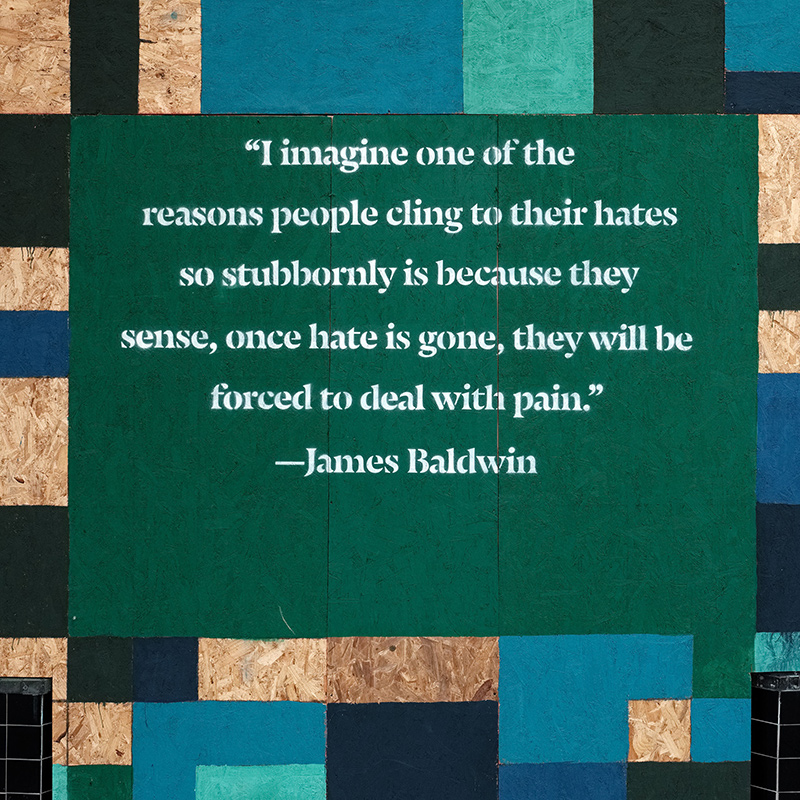
Riley had help from Matt Hedt and her son Pascal Eure, and two friends and colleagues: Jennifer Meanley, associate professor of painting at UNCG, and Derek Toomes, digital director in UNCG’s Department of Interior Architecture.
“It all came together quickly, in three days,” Riley says. Referring to the current pandemic, she adds, “We wore masks the whole time.”
The same weekend, Ryan Oakley painted at Bonchon restaurant’s facade, on South Elm. She explains, “I didn’t really have a plan going into the mural. However, I think the main purpose was to create images that would serve as Black representation. For a lot of Black Americans just existing is an act of resistance in itself, so I at least wanted the images to represent that.”
She added, “Once I settled on the quotes I wanted to use, there was a second message. There is no middle ground when it comes to racism.”
Nejla Harris painted beside Oakley. A rising senior at UNCG, Harris is majoring in interior architecture with a minor in African diaspora studies.
The Raleigh-born artist said, “It means a lot to share my art with the Greensboro community.”
Well over a hundred amateur and professional artists – office employees, designers, lawyers, waiters, store owners, and many students – created downtown Greensboro’s new art. They revealed their souls and part of the city’s spirit.
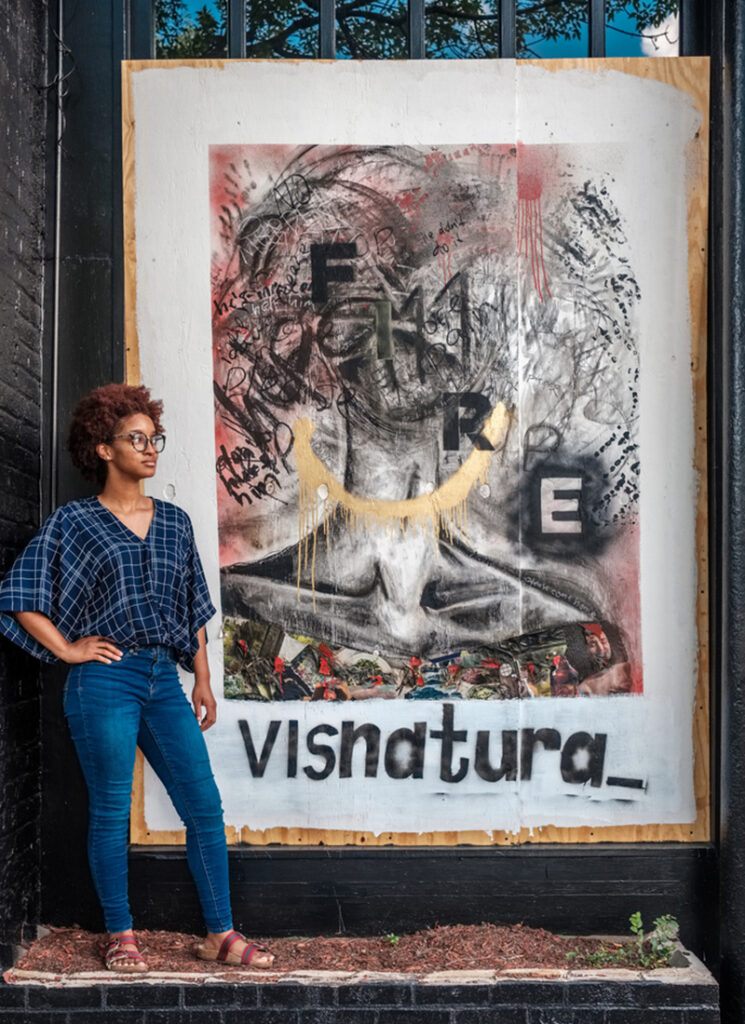
Essence Foster, who got her BFA at ECU and is now a pre-med student at UNCG, painted a panel near the ones defaced. She gestures to her art. “I speak with this. This is my voice. I want to be loud and clear. This is nothing to whisper about.”
At Elsewhere Museum, Marsh and Meanley were on hand Tuesday, as former UNCG doctoral student and current N.C. A&T professor Darlene McClinton led the artists in planning the mural there. Kidd Graves, an art major who graduated from UNCG in December and is now an ECU grad student, is also on the project.
Across the street, Nejla Harris had just completed the final touches to her art panels. To close this story, Harris has the final word, as she shares her experience:
“We just went out, picked a wall and started painting! In the beginning we knew we wanted something that would be eye-catching. Overall I didn’t know where to start. Ryan and I thought of things as we went through each minute of the process. The second day I had a plan that kept me up all night. I decided to focus my panels on Black men. Watching the video of George Floyd’s daughter saying ‘Daddy Changed The World’ had such an inspirational effect on me. The video reminded me of my own father and how important he is to me. Every moment Black men should be aware of how important they are to this society, culture, and the world. Seeing how Black men can be affected by the negative standards of this society, mentally, physically, and spiritually, is heartbreaking. These Black men are our fathers, our uncles, our brothers, our children, our cousins, and our friends. My choice of quotes relied on the feeling of reassurance. Expressing that, Black men, we see you. We hear you. We care for you. We love you. Never in a million years I would’ve thought I’d be living through a period of a global pandemic and basically another civil rights movement. Creating art is our way of expression to fight against systemic racism and the oppression of Black people.”
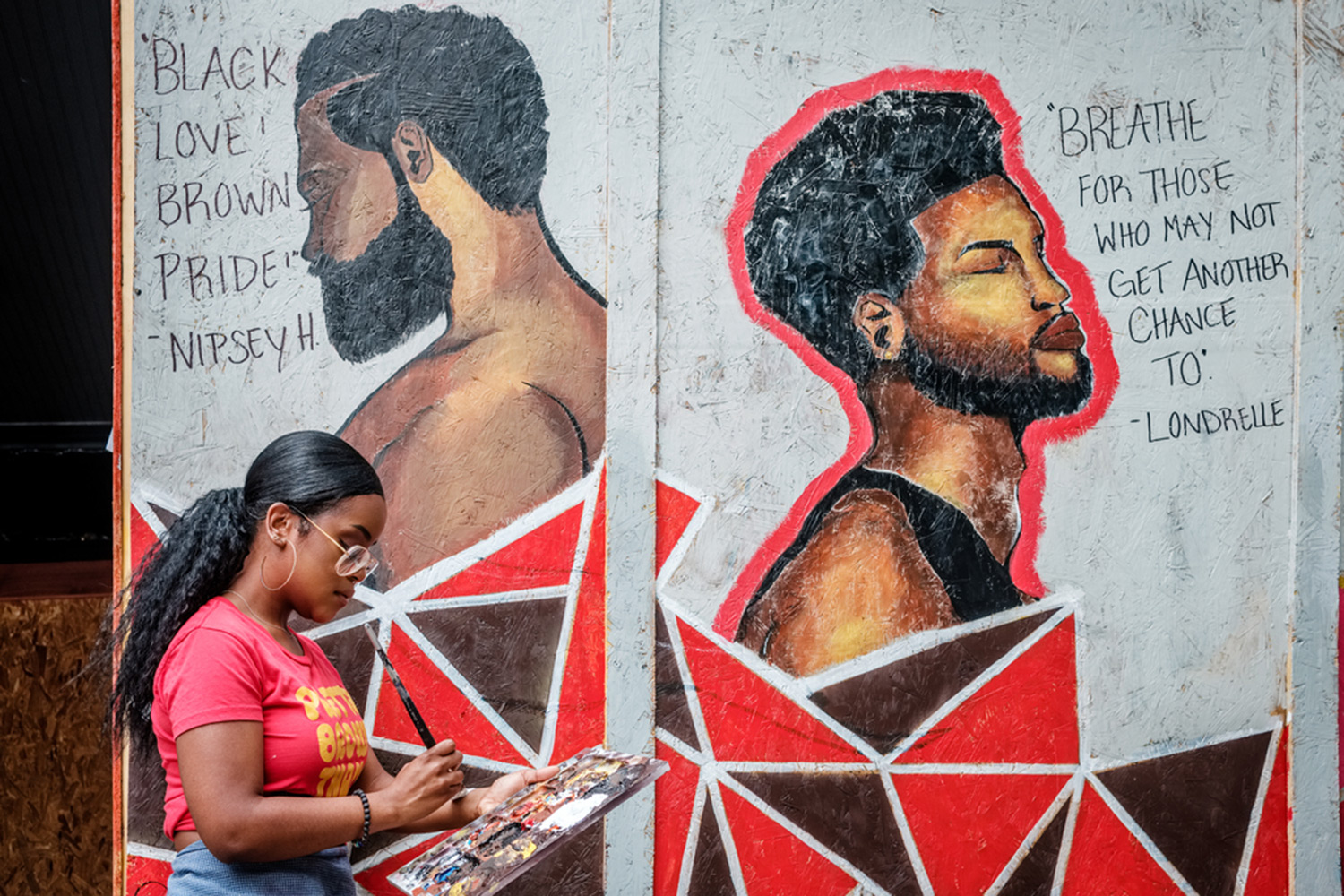
Written by Mike Harris, UNCG Magazine
Photography by Martin W. Kane, University Communications
